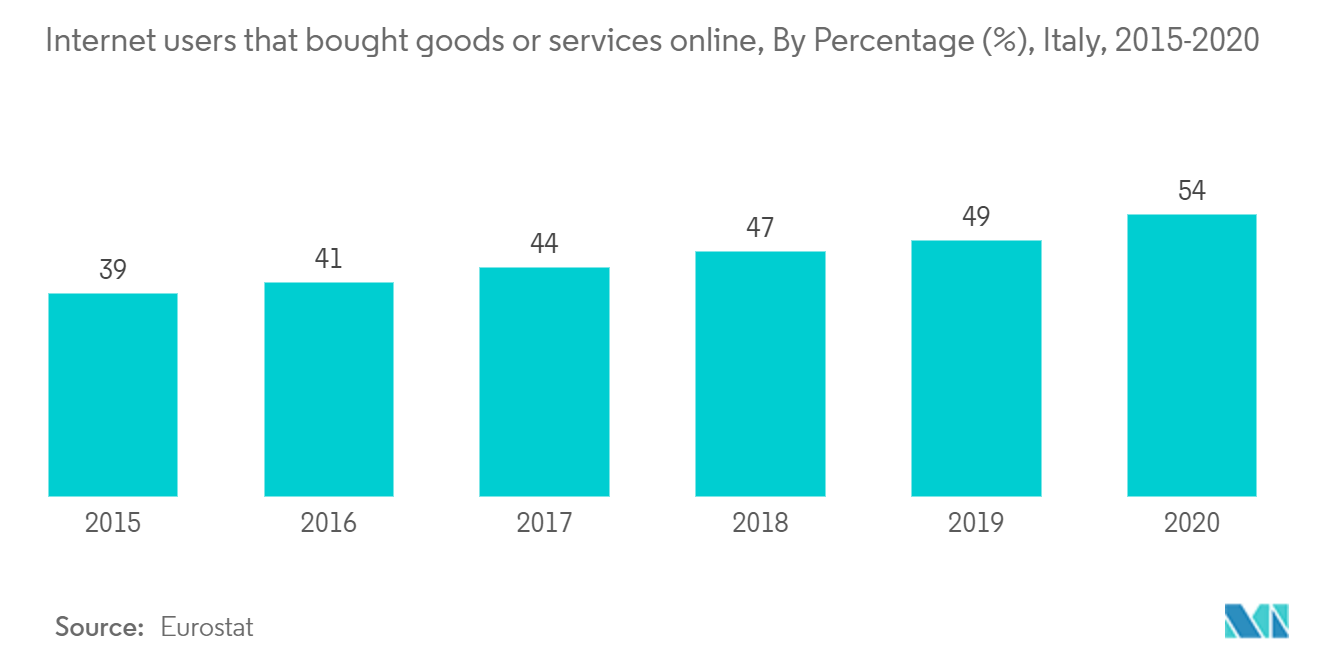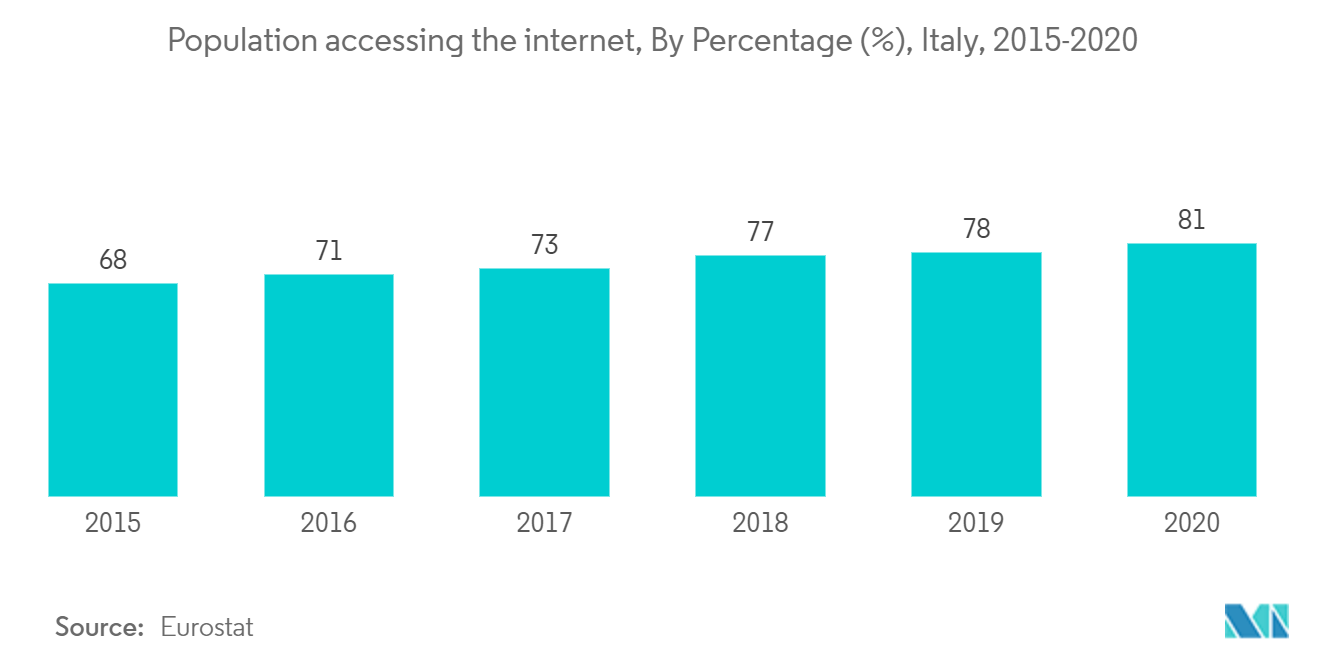Market Trends of Italy Payments Industry
This section covers the major market trends shaping the Italy Payments Market according to our research experts:
Increasing Use of Digital Payments for Online Sale
- Italy's payments market is evolving in response to consumer behavior. Cashless economies, mobile banking, instant payments, digital commerce, and the growing influence of regulatory agencies are a few trends affecting the payments market.
- Italy's payment preferences are shifting away from cash and credit cards toward digital wallets and buy now, pay later transactions (BNPL). The rise of alternative payment methods and volume moving to credit- and debit-linked digital wallets are all factors contributing to credit cards' declining share.
- Several e-commerce purchases in Italy are made with a digital wallet, frequently funded via a bank account. This is the case with Satispay, an Italian mobile wallet that is spreading to Belgium, France, Germany, and Luxembourg. It enables over 1.5 million loyal customers in Italy to pay for purchases online and in-store, as well as exchange money with friends.
- Cards are one of the most popular online payment methods in the country, and their market share is expected to remain stable until 2023. Visa, Mastercard, and the domestic brand CartaSi are the most popular card brands. PagoBancomat, a local card scheme, is also popular and has invested millions in its digital wallet capabilities.

Number of internet users in Italy
- Every online banking transaction takes place over the internet. On the other hand, mobile banking refers to banking operations carried out using a tablet or a smartphone. As a result, mobile banking includes accessing a bank's mobile website, texting with the bank, or using its mobile app. Mobile banking is prevalent among Italian customers because it uses advanced features such as face recognition for faster log-ins and can be used anywhere.
- The Italian online shopping market offers numerous opportunities. A willingness to make cross-border purchases will benefit international e-commerce merchants. With domestic e-commerce still in its early stages, several Italian e-shoppers have made an overseas purchases in the last year.
- Payment instruments enable money to be transferred between parties. The most common distinction is between cash and alternative mechanisms such as cheques, wire transfers, direct debits, debit cards, credit cards, and electronic money. The advancement of information technologies tends to increase the use of the internet and mobile phones for payment (so-called e-payments and m-payments).
- Italians are adopting the internet, with the country's digitalization levels steadily increasing in recent years. The country had witnessed intense internet penetration, with 70% of its population already using it in 2020 as per WorldBank. However, the data also indicates the large number of users that are yet to explore it, which has created a massive opportunity for the market's growth. As more individuals start accessing the internet, the payments market of the country is expected to gain more traction with more users of online sales channels.


